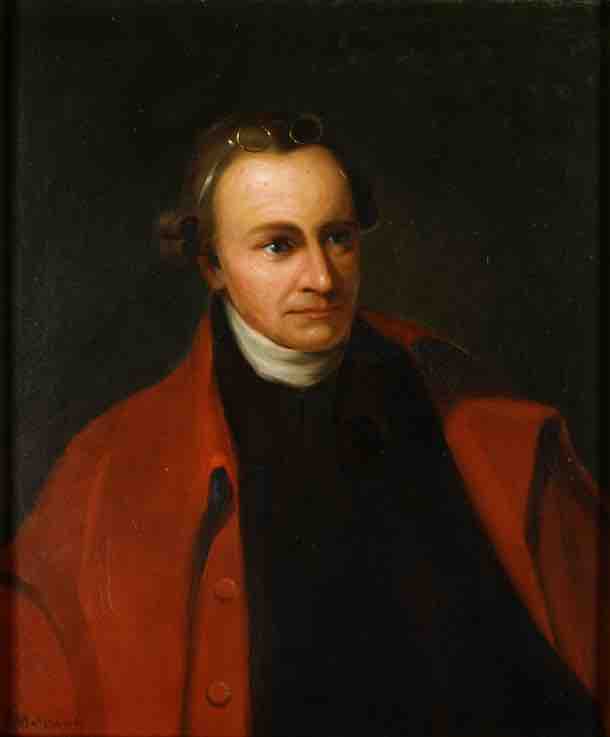The Process of Ratification
On September 17, 1787, the the delegates at the Philadelphia Convention finalized the new United States Constitution. The old Congress maintained the powers to expedite or block its ratification. Benjamin Franklin gave a speech shortly after the Constitution had been completed, urging unanimity among all states. However, the Convention had decided that only nine states—two-thirds of the total number of states—would need to ratify the Constitution in order to inaugurate the new government. More populous states, such as Virginia, New York, and Massachusetts, would be critical to this process.
On September 28, 1787, after some debate, Congress unanimously decided to submit the Constitution to the states for action. The need for only nine states was a controversial decision at the time, as the Articles of Confederation could only be amended through a unanimous vote of all states. The fight for ratification was arduous, largely because special conventions were required in lieu of hearings within the state legislatures for ratification. Many state governments were also interested in retaining their powers and were resistant to ratifying a new, stronger, centralized government.
Federalists and Anti-Federalists
Two parties soon developed: Federalists in support of the Constitution and Anti-Federalists opposed. The Constitution was debated, criticized, and expounded clause-by-clause.
Alexander Hamilton, James Madison, and John Jay wrote a series of essays popularly referred to as The Federalist Papers, which supported ratification and attacked the weaknesses of the Articles of Confederation. The men acknowledged that the Constitution was not perfect, but argued it was far superior to any other proposal made. The essays explored the proposed Constitution, defended its provisions, and outlined the ways in which its check and balances would prevent abuses of power. The Federalists defended the weakest points of the Constitution (such as its current lack of a bill of individual rights) by suggesting that current protections were sufficient and that Congress could always propose amendments later.
However, Anti-Federalists such as Patrick Henry attacked the Constitution, suggesting it would lead to a dangerously powerful national government. They cited the lack of a bill of rights as a dangerous omission. Many were concerned that the strong national government was a threat to individual rights and that the President would ultimately become like a king. They also objected to the federal court system proposed in the Constitution.

Patrick Henry
Patrick Henry, from Virginia, was an American Revolutionary War hero and prominent Anti-Federalist.
State-by-State Ratification
Each state was to hold a convention to debate, and ratify or reject, the Constitution. The Constitution was proposed in September 1787, and by year's end states that were in favor (including Delaware, Pennsylvania, New Jersey, Georgia, and Connecticut) had quickly ratified it. However, some vitally important states did not ratify within the year; these included Massachusetts, New York, and Virginia. Massachusetts finally ratified it by a close margin of 187 to 168. Maryland and South Carolina also ratified, and then New Hampshire provided the all-important ninth ratification.
The United States was now technically under the jurisdiction of the new Constitution, but the economically dominant state of New York and the populous state of Virginia, among others, had still not ratified it. In New York, fully two-thirds of the convention delegates were initially opposed to the Constitution. Hamilton galvanized the Federalists' campaign, and on July 26, 1788, New York ratified by a close margin with the recommendation that a bill of rights be added. The Federalists succeeded owing largely to Hamilton's efforts to reach a number of key compromises with moderate Anti-Federalists.
Organizing the New Government
The process of organizing the government began soon after Virginia and New York's ratification. The Continental Congress–which still functioned at irregular intervals–passed a resolution on September 13, 1788, to promulgate the new Constitution and set New York City as the seat of the new government. It set January 7, 1789, as the day for choosing presidential electors; February 4 for the meeting of electors to select a President; and March 4 for the opening session of the new Congress and the beginning of the first presidential term. Thus, March 4, 1789 became Inauguration Day.
George Washington was elected the Constitution's President by a unanimous vote of presidential electors chosen by each state's legislature. These included Virginia's elector, the Anti-Federalist Patrick Henry. The newly elected Congress was a victory for Federalists, as the Senate included 20 Federalists and two Anti-Federalists, and the House would seat 48 Federalists and just 11 Anti-Federalists.
After the Constitution was ratified, most delegates of the 1st United States Congress found themselves in agreement that a bill of individual rights was a necessary addition to the founding documents of the new nation. The Bill of Rights was then created under the new Constitution, leading to North Carolina and finally Rhode Island consenting to ratify. By May 1790, all 13 states had ratified.